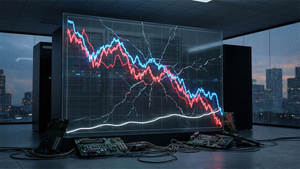Chevron Corporation (NYSE: CVX) today announced that its subsidiary, Chevron U.S.A. Inc. (Singapore Branch) (Chevron), has safely delivered its first shipment of offset-paired liquefied natural gas (LNG) cargo.
Greenhouse gas emissions for the cargo, from the Gorgon Project off the northwest coast of Western Australia, will be fully offset via the retirement of high-quality nature-based and energy efficiency offsets in Cambodia, Indonesia and Nepal.
“Chevron’s first full lifecycle emissions offset cargo advances our net zero ambitions and represents a significant milestone in Chevron’s relationship with CPC Corporation, Taiwan,” said John Kuehn, President of Chevron Supply and Trading, a division of Chevron U.S.A. Inc.
“We share the view that the future of energy is lower carbon and expect this offset-paired cargo to be the first of many as we leverage our capabilities, assets, and customer relationships to deliver energy solutions to a growing world.”
For this cargo, Chevron’s Scope 1 and 2 emissions (emissions from upstream production, transportation, liquefaction and shipping) were calculated based on methodology jointly developed by Chevron, Pavilion Energy Trading & Supply Pte. Ltd. and QatarEnergy in 2021, with Scope 3 emissions calculated based on PACE Global report1 for regas and distribution and IPCC 2006 emission factor2 for combustion.
The emissions will be fully offset via the surrender of Verra3 certified offsets, namely the Katingan Peatland Restoration and Conservation Project in Indonesia, the Southern Cardamom REDD+ Project in Cambodia and the Energy Efficient Cooking Solution in Nepal.
About Chevron
Chevron is one of the world’s leading integrated energy companies. We believe affordable, reliable and ever-cleaner energy is essential to achieving a more prosperous and sustainable world. Chevron produces crude oil and natural gas; manufactures transportation fuels, lubricants, petrochemicals and additives; and develops technologies that enhance our business and the industry. We are focused on lowering the carbon intensity in our operations and growing lower carbon businesses along with our traditional business lines. More information about Chevron is available at www.chevron.com.
About CPC Corporation, Taiwan
CPC was founded on June 1, 1946 with a mandate to lead the country’s energy sector. For the more than 70 years since then, we have fulfilled that commitment by taking on responsibility for the development of national energy resources. We have consistently ensured a stable supply of petroleum product despite recurring oil crises, liberalization of the domestic market and fluctuations in produces prices. While tackling these challenges, we have not wavered in making our just contribution to Taiwan’s economic progress and its citizens’ welfare. More information about CPC is available at www.cpc.com.tw.
CAUTIONARY STATEMENTS RELEVANT TO FORWARD-LOOKING INFORMATION FOR THE PURPOSE OF “SAFE HARBOR” PROVISIONS OF THE PRIVATE SECURITIES LITIGATION REFORM ACT OF 1995
This news release contains forward-looking statements relating to Chevron’s operations and energy transition plans that are based on management's current expectations, estimates and projections about the petroleum, chemicals and other energy-related industries. Words or phrases such as “anticipates,” “expects,” “intends,” “plans,” “targets,” “advances,” “commits,” “drives,” “aims,” “forecasts,” “projects,” “believes,” “approaches,” “seeks,” “schedules,” “estimates,” “positions,” “pursues,” “may,” “can,” “could,” “should,” “will,” “budgets,” “outlook,” “trends,” “guidance,” “focus,” “on track,” “goals,” “objectives,” “strategies,” “opportunities,” “poised,” “potential,” “ambitions,” “aspires” and similar expressions are intended to identify such forward-looking statements. These statements are not guarantees of future performance and are subject to certain risks, uncertainties and other factors, many of which are beyond the company’s control and are difficult to predict. Therefore, actual outcomes and results may differ materially from what is expressed or forecasted in such forward-looking statements. The reader should not place undue reliance on these forward-looking statements, which speak only as of the date of this news release. Unless legally required, Chevron undertakes no obligation to update publicly any forward-looking statements, whether as a result of new information, future events or otherwise.
Among the important factors that could cause actual results to differ materially from those in the forward-looking statements are: changing crude oil and natural gas prices and demand for the company’s products, and production curtailments due to market conditions; crude oil production quotas or other actions that might be imposed by the Organization of Petroleum Exporting Countries and other producing countries; technological advancements; changes to government policies in the countries in which the company operates; public health crises, such as pandemics (including coronavirus (COVID-19)) and epidemics, and any related government policies and actions; disruptions in the company’s global supply chain, including supply chain constraints and escalation of the cost of goods and services; changing economic, regulatory and political environments in the various countries in which the company operates; general domestic and international economic and political conditions, including the military conflict between Russia and Ukraine and the global response to such conflict; changing refining, marketing and chemicals margins; actions of competitors or regulators; timing of exploration expenses; timing of crude oil liftings; the competitiveness of alternate-energy sources or product substitutes; development of large carbon capture and offset markets; the results of operations and financial condition of the company’s suppliers, vendors, partners and equity affiliates, particularly during the COVID-19 pandemic; the inability or failure of the company’s joint-venture partners to fund their share of operations and development activities; the potential failure to achieve expected net production from existing and future crude oil and natural gas development projects; potential delays in the development, construction or start-up of planned projects; the potential disruption or interruption of the company’s operations due to war, accidents, political events, civil unrest, severe weather, cyber threats, terrorist acts, or other natural or human causes beyond the company’s control; the potential liability for remedial actions or assessments under existing or future environmental regulations and litigation; significant operational, investment or product changes undertaken or required by existing or future environmental statutes and regulations, including international agreements and national or regional legislation and regulatory measures to limit or reduce greenhouse gas emissions; the potential liability resulting from pending or future litigation; the company’s future acquisitions or dispositions of assets or shares or the delay or failure of such transactions to close based on required closing conditions; the potential for gains and losses from asset dispositions or impairments; government mandated sales, divestitures, recapitalizations, taxes and tax audits, tariffs, sanctions, changes in fiscal terms or restrictions on scope of company operations; foreign currency movements compared with the U.S. dollar; material reductions in corporate liquidity and access to debt markets; the receipt of required Board authorizations to implement capital allocation strategies, including future stock repurchase programs and dividend payments; the effects of changed accounting rules under generally accepted accounting principles promulgated by rule-setting bodies; the company’s ability to identify and mitigate the risks and hazards inherent in operating in the global energy industry; and the factors set forth under the heading “Risk Factors” on pages 20 through 25 of the company’s 2021 Annual Report on Form 10-K and in subsequent filings with the U.S. Securities and Exchange Commission. Other unpredictable or unknown factors not discussed in this news release could also have material adverse effects on forward-looking statements.
1 “LNG and Coal Life Cycle Assessment of GHG Emissions” by PACE Global (Oct 2015) for Regas/Distribution.
2 IPCC 2006 Taiwan Gov Model for Combustion.
3 Verra is a nonprofit organization that operates the world’s leading carbon crediting program, the Verified Carbon Standard (VCS) Program, as well as other programs in environmental and social markets
View source version on businesswire.com: https://www.businesswire.com/news/home/20220929005992/en/
Contacts
Cameron Van Ast
cameron.vanast@chevron.com
+61 0 439 022 658





